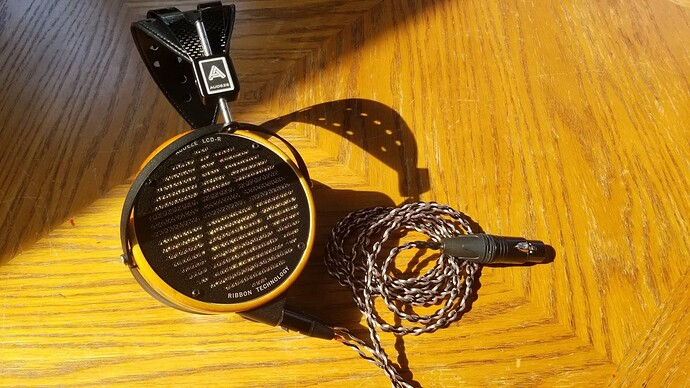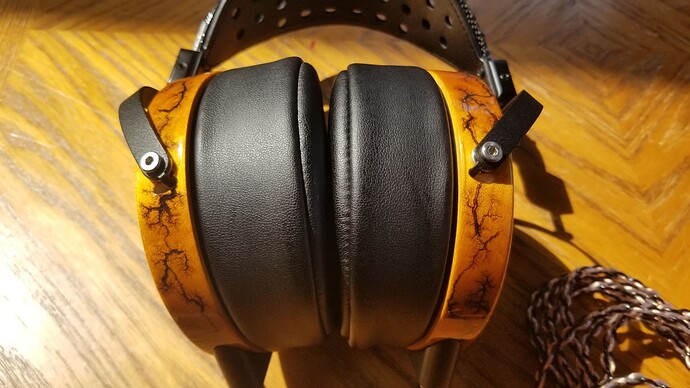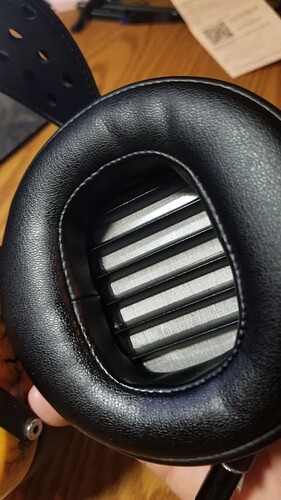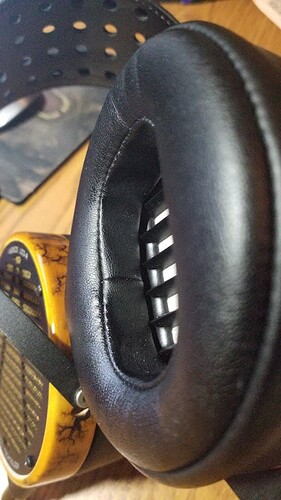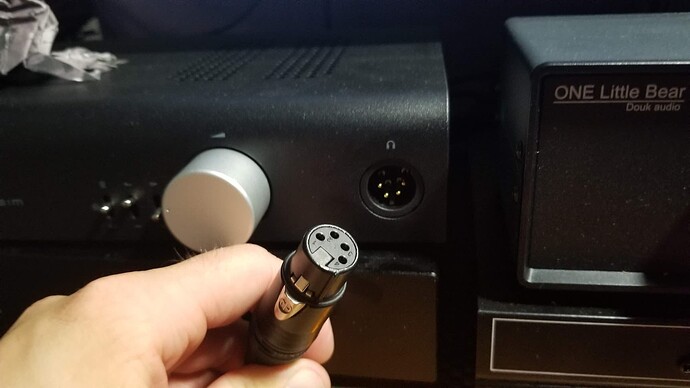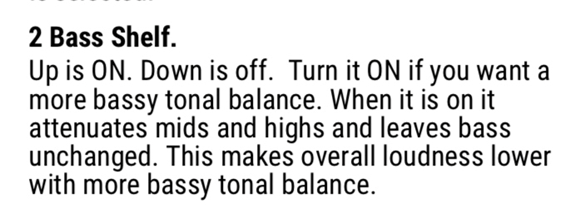INTRODUCTION
A fellow audiophile very generously extended me the opportunity to give the new limited edition Audeze LCD-R “ribbon” headphone with the Schiit Jotunheim A headphone amp a thorough spin. I was on the fence on how fully to go into this review given that there were something like 67 total units on sale with no immediate plans to make more, plus they have already sold out by the time I write this. But, I decided to give it the full WaveTheory treatment for 3 reasons: 1) inevitably a few units will hit the resale market and a potential buyers will want to be as informed as possible; 2) most people interested in this headphone will never be able to hear it, but it’s still good to try to educate our hobby on the pros and cons of this new approach; and 3) hopefully this will add to a positive pressure campaign on Audeze to either make more of these and/or continue to develop and launch new products with this driver technology. This third reason lets the cat out of the bag a bit because it suggests that the LCD-R + Jot A combo is something worth having more of. And that suggestion is spot on. This combo is a remarkable value and IMHO should either become a regularly produced part of Audeze’s LCD line or serve as the basis of a (hopefully soon) new model based on this tech that is more widely produced.
Given the sheer size of the 3 stated goals above, this review is LONG. So, strap-in and get comfortable, fellow audiophiles. There is a lot to talk about with this headphone.
TL;DR
Bravo, Audeze and Schiit! The LCD-R + Jot A combo brings technical performance and enjoyability on par with headphone and amp pairings that easily cost $4000+ in some areas of technical performance and does it for $2500. In particular, the resolution-per-dollar value here is insanely high. The frequency response is well balanced, the dynamics are fast and impactful, and the imaging and separation are strongpoints to boot. The timbre is a bit of a mixed bag, sometimes being excellent, other times being a bit too mid-forward and/or slightly peakier in the treble than I’ve heard from some other hi-end headphone and amp combos, and the physical fit and comfort comes with all of the Audeze LCD baggage, but the bottom line here bears repeating: from a technical standpoint, particularly in the resolution and dynamics, the LCD-R + Jot A combo punches way above its price point. Audeze should strongly consider furthering the production of this model or taking the next step with this technology sometime soon.
KNOW YOUR REVIEWER
My preferred genres are rock/metal and classical/orchestral music. I’m getting to know jazz more and enjoying quite a bit. I also listen to some EDM and hip-hop. My hearing quirks include a high sensitivity to midrange frequencies from just under 1KHz to around 3Khz, give or take. My ears are thus quick to perceive “shoutiness” in headphones in particular. I describe “shoutiness” as an emphasis on the ‘ou’ sound of ‘shout.’ It’s a forwardness in the neighborhood of 1KHz and/or on the first one or two harmonics above it (when I make the sound ‘ooooowwwww’ into a spectrum analyzer the dominant frequency on the vowel sound is around 930Hz, which also means harmonic spikes occur again at around 1860Hz and 2790Hz). In the extreme, it can have the tonal effect of sounding like a vocalist is speaking or singing through a toilet paper tube or cupping their hands over their mouth. It can also give instruments like piano, but especially brass instruments, an added ‘honk’ to their sound. I also get distracted by sibilance, or sharp ‘s’ and ‘t’ sounds that can make ssssingers sssssound like they’re forssssssing esssss ssssssounds aggresssssssively. Sibilance does not physically hurt my ears nearly as quickly as shout, though. It’s distracting because it’s annoying and unnatural. Finally, I’m discovering that I have a preference for more subtle detail. I like good detail retrieval and hearing what a recording has to offer, but I prefer what many would consider relaxed and subtle rather than aggressive or detail-forward. To my ear, more subtle detail-retrieval sounds more realistic and natural than aggressive, detail-forwardness. There is a balance here, though, because detail retrieval can get too relaxed and that can sound unnatural, as well, or simply leave out important aspects of the recording. Readers should keep these hearing quirks and preferences in mind as they read my descriptions of sound.
FEATURES & BUILD
The big story here is the driver tech. Audeze calls the driver a ribbon, but it might be more accurate to refer to it as a planar driver where they figured out how to make almost the entire diaphragm area the electrical trace thus creating an ultra-low-impedance planar membrane. We can quibble about appropriate terminology all day, but the important part is that this is a new twist on headphone driver tech and that alone is exciting, especially when it’s a headphone maker as established and well-regarded as Audeze doing it. I won’t go into any more detail about that driver tech here, leaving it to Audeze’s website to do the explaining. However, a key aspect of this driver design is that it is very low impedance…2 ohms! That requires careful headphone-amp matching. Fortunately, Audeze covered that by bundling the LCD-R with the Schiit Jotunheim A current-drive headphone amp. Let’s dig into the features of each unit a little bit more.
LCD-R Build
The LCD-R is an Audeze LCD model, and that means it comes with the typical LCD series aesthetic; big, round earcups with a black metal grille over the back that has that vaguely “A” shaped pattern breaking up the horizontal slats. The typical forward angled earpads are here, and they are a very soft leather with memory foam cushioning. The earcup housings are made of cedar with Lichtenburg Fractal styling burned into them. They look fantastic. The headband is Audeze’s carbon fiber suspension-strap type. The comfort is typical LCD. They are a bit on the heavy side, but the comfort is solid if the weight isn’t a problem. The pads compress a bit more than other LCD models I’ve used, but are really soft and supple.
Did I mention they look great? Enoy these couple pics I took in a sunlit room:
The gold-colored screen behind the grille adds a very attractive contrast.
And yeah, that laser-burned pattern on the wood rings is absolutely gorgeous.
Returning to the softness of the pads for a moment, one complaint that has surfaced is that some listeners’ ears touch the fazors inside the cups. Here’s why:
Unlike previous LCD models I’ve used that have fazors, there is no cover on these fazors. They just stick out into space in their full, naked glory. From a more oblique angle, you can see how far they stick out:
I’m the second user of this set of LCD-R. When I first got them, my ears made no contact with the fazors. After a few days of listening, I could at times fell my earlobes just brushing against one of the fazors on each side. My ears don’t stick out much either. I didn’t notice any sonic differences that I can remember with the pads compressing just slightly more, but this ear contact may be an issue for some. I had these on hand for two weeks and after that initial ear contact it at least didn’t get any worse. It’s possible the pads broke in to roughly the level they are going to.
Finally, the included cable uses the traditional mini-XLR dual entry into the cups that Audeze favors. But, the interesting part is on the headphone amp end. The connector is a female XLR 4-pin jack. This matches the Jot A and is likely done to limit the chances of plugging the LCD-R into a headphone amp that isn’t made to handle its load type and blowing things up.
The cable itself is…ok. It’s braided with plastic insulation. It’s a little too stiff and too prone to tangling for my liking. It doesn’t lay very well on a table top. But, it also isn’t like a Focal headphone cable that holds its shape like it’s a frozen garden hose. Sonically, the cable is fine, but ergonomically I’d like something a little softer and more flexible. However, obtaining such a thing would likely be costly as there are unlikely to be very many third-party cables made for this headphone given there were only 67 units sold. If you have an LCD-R and wish to keep it long term, budget for a custom cable from a custom cable maker of your choice.
Jotunheim A Build
The Jotunheim A is a modified version of Schiit’s Jotunheim, specifically modified to be a current-drive amp to use with ultra-low-impedance headphones. It has the typical Schiit aesthetic with a black chassis that is familiar to anyone who owns a Jot, Bifrost, Lyr, or Asgard. What differentiates the Jot A from other Jot models, other than being current-drive, is there is only a balanced headphone output (which is a male 4-pin XLR to match the included headphone cable), instead of a gain stage switch there is an EQ switch, and the name Audeze is emblazoned on the top panel. Outside of those traits, it’s a Jotunheim amplifier in appearance and connections. There is the full complement of balanced XLR and single-ended RCA inputs and preouts on the back panel, just like any other Jot. And of course, there is the ever-Schiity rear panel power switch. There is also a slot on the back labeled as the space for one of Schiit’s DAC modules. However, if you’re considering one of these sets, I strongly suggest an outboard DAC of a higher caliber than one of those DAC modules.
Let’s talk more about that EQ switch. According to Schiit:
My ears confirm this pretty well. With the switch off the treble and midrange is much more forward and the overall loudness is higher. With the switch on the bass is more prominent, the mids and treble are attenuated, and the overall SPL drops a bit. Effectively the combo provides 2 sound signatures because of this switch.
Now let’s talk about gain. There is no gain switch on the Jot A but the amp’s gain is already high. When paired with a DAC that has a standard, fixed output level, I don’t think I ever turned the potentiometer up past about 10:30 or 11:00. Depending on how hot a track is mastered, that range is already getting into my normal listening level in the 72-75dB average range. There just is not much play in the potentiometer. This can be mitigated by using a DAC with variable output level, but that does limit options somewhat. I didn’t find it to be a problem, but some listeners might want more control.
SOUND
Test Gear
Since the LCD-R and Jot A are a combo unit meant to work together, the only gear to pair it with is DACs and source gear. I used my Windows 10 desktop PC running Audirvana as the primary source, playing either local FLAC files of 16-24 bits and 44.1-192KHz sampling rates, or streaming from Qobuz at similar rates. I tried Schiit’s Bifrost 2 DAC but did the vast majority of my listening using the Berkeley Audio Designs Alpha S2 DAC paired with the Singxer SU-2 USB interface and digital-to-digital converter.
Based on Bass
I did the vast majority of my listening with the EQ switch set to ‘on’ as well. To my ear this was the more natural and more comfortable sound signature. Without the EQ the LCD-R are aggressively mid-forward and bright and very thin in the bass. If you’re familiar with the signature of the LCD-X, the signature of the LCD-R without this EQ is a more extreme version of that sound; more mid-range and treble focused but very shouty, very harsh, very thin. With the switch engaged the sound signature warms, the bass becomes more prominent and punchier without being overemphasized or too-thick. The mids and highs relax quite a bit and have a much more natural timbre. With the EQ on, the overall signature of the LCD-R is reminiscent of the LCD-2 prefazor, although still unique on its own, with a bit more refinement. To my liking the LCD-R goes from “hard pass” without EQ to “Hello! We might have something here!” with the EQ. So, I left the EQ on and ran with it for the rest of my listening.
Sound Signature
Without the EQ switch the signature is best described as bright, mid-forward, and bass-light. But, as I said above, I didn’t do much listening there. With the EQ switch engaged, the sound signature is probably best described as neutral-warm. There isn’t a lot of emphasis on particular frequency ranges – mostly, which we’ll get to – but there is just a bit of an increase in midbass presence that gives it a hint of warmth. I wasn’t a part of Audeze’s design team, but it strikes me that the switch engaged is the LCD-R’s “correct” or “intended” sound. That certainly doesn’t stop anyone from preferring the switch off.
That said, the LCD-R is an Audeze headphone, and the Audeze house sound is very much present. For context, the LCD-R is the fifth headphone I’ve had and extended audition with from the Audeze LCD line. The others are the LCD-2 (prefazor, revision 1), LCD-3 (prefazor), LCD-X, and LCD-24. All of them have some similar characteristics in some qualitative aspects of sound like timbre, and all of them have a midrange presence that hangs out pretty close to the “shout” line. And most of the models have excellent, essentially linear bass extension all the way down to 20Hz, with the exception of the X (which is pretty well fixed by Audeze’s Reveal EQ). The timbral similarities are in that they all sound like they’re related in how the reproduce the sounds of instruments and voices, all have similar tonal qualities. It’s analogous to how human siblings often look unique, but also look like each other to varying extents. Now, the midrange presence hanging out around the “shout” line…yeah, that probably needs some explanation. As it says in the Know Your Reviewer section above, too much energy in the 1Khz range can impart a tonal quality that emphasizes frequencies near the ‘ow’ range. To my ear, all the LCDs have a mid-range frequency response that keeps them hanging out around the shout line – an imaginary line where vocals become shouty and instruments become honky. Depending on model, the LCDs either usually stay below the point where their midrange becomes shouty or honky, or they cross it with some regularity. None of them never shout/honk to my ear, but they certainly vary in how prone they are to doing so. In my listening and prior to the LCD-R, I find that the frequency and severity of shout, from least to greatest, goes LCD-2PF, LCD-24, LCD-3PF, LCD-X. Let’s look at each the major frequency areas of the LCD-R individually.
Bass
To my ear the bass extension sounds quite linear, with essentially no discernible roll-off in presence all the way down to the lowest audible regions and without much emphasis either; classic Audeze LCD, that. The bass also is quite dynamic and punchy, bringing an amount of physicality that is fun and engaging, but rarely distracting. Pitch definition is also solid, and I can’t remember ever thinking that the bass is one-notey in any way. There is also an excellent amount of texture, particularly at the $2500 price point.
Mid-Range
For many listeners, the mids likely have an appropriate amount of presence, never sounding recessed. They also can have a reasonably natural timbre. Yet, there is a key question: how loud do you listen? Below about a 70dB average SPL, the mids sound quite wonderful; natural, very detailed, smooth, and generally quite convincing. Above 70dB average and shoutiness and honkiness start to appear, at least for me. [I’m going to remind everyone of the 1KHz sensitivity I have as described in the Know Your Reviewer section.] Vocals can become aggressively shouty at these generously loud – but not overwhelming – sound pressure levels. That’s not always bad, but it is often bad. For music where there are lots of shouted vocals, this shoutiness can actually enhance the experience. But for the majority of music where vocals are not shouted, this can break the timbre and be distracting. The effect isn’t limited to vocals, either. As I wrote this review it was on the day that news of Charlie Watts’s death broke. So of course I did some listening to The Rolling Stones. With an average volume around 72dB, Keith Richards’s twangy guitar licks could become too intense and it got fatiguing at the volume level more quickly than the volume alone usually does for me. Brass-heavy tracks can also become very overwhelming for the same reason.
Treble
On the whole, the treble is also lovely and natural sounding. The timbre is strong, the detail is great, and the tonal balance is usually excellent. I say usually here because there are some recordings where the treble can get a bit peaky and come across as a bit shimmery. However, I think that has more to do with recording quality than the LCD-R’s technical ability. That’s a good reminder to drop the obligatory ‘the LCD-R will tell you if a recording is bad’ type of comment, because it’s true.
Spatial Performance
The LCD-R is classic Audeze LCD in that it puts your head in a bubble of sound. The soundfield is not particularly wide or large, but there is a somewhat 360 degree effect going on. To me, it’s like standing on the maestro’s stand of a symphony, where you’re almost in the middle of things, rather than sitting in the audience where almost everything is out in front of you. This bubble is neither good nor bad on its own. It is its own thing that comes down to preference and can be beneficial or not depending on music selection. Within that bubble, however, the LCD-R does a stunningly good job of imaging, layering, and separation. Instruments and voices are all given their own, well-defined location both laterally and vertically, and also in terms of depth to the level I have not previously heard at $2500 or less. Unlike previous LCD models too, when it goes shouty for me, the LCD-R does a better job of maintaining its spatial integrity than even the more expensive LCD-24. Bottom line here, the spatial performance is one of the areas where the LCD-R and Jotunheim A punch above their weight.
Resolution & Detail
Let’s keep the accolades rolling and talk about resolution. I’ll use the term resolution as a catch-all for detail retrieval and micro-detail retrieval. In a word “wow.” The sheer resolving power of the LCD-R + Jot A is another area where the combo punches well above its weight. In a bit of a comparison section spoiler, I spent several hours comparing the LCD-R + Jot A with my most resolving chain, Vioelectric HPA-V281 driving a HiFiMan HE1000v2. On the question of resolution, I eventually threw up my hands and said there is no clear winner…almost. I thought the HE1000v2 had slightly more texture to its sound, which is probably a form of micro-detail retrieval, and at that mostly in the bass. The rest of the frequency range was a tossup. That one aspect aside, I spent hours trying to see if there was anything either chain was presenting that the other one wasn’t and…no, not that I could tell. However, there was a difference in how they emphasized the details. The LCD-R is a little more forward than the HE1000v2 in its presentation of detail. More often than not I’d hear something on the LCD-R and think, “wait, did I hear that echo on the HiFiMan?” And the answer was always yes, the V281 + HE1000v2 chain always resolved it too, but the LCD-R did it in a way that made it more noticeable. Even though I am listener that prefers my detail retrieval more subtle and relaxed – it’s more natural that way – the LCD-R’s forwardness in the detail retrieval was rarely objectionable, not making itself a story the way some aggressive detail-retrievers can. And it does all of this at lower volumes, too. Have you ever had a headphone that you needed to really crank up before you felt like it was giving you all the stuff in the recording? That’s usually an indicator of lacking micro-detail retrieval. No such worry here, all the good stuff is as present at 60dB as it is at 70+ dB.
Macrodynamics
Here’s another strength of the LCD-R. It has a very dynamic, fast presentation. I mentioned the bass slam earlier, which is notable, but throughout the entire audible frequency spectrum there is a respectable snappiness to the sound. The attacks and decays of drum and cymbal strikes, string plucks, etc. are always quick and taut. It doesn’t sound dry, still maintaining an enjoyable smoothness, but still, especially with the leading edges of wavefronts, presents energetically.
Summing Up Sound
To sum up this section, my ears tell me there are three major aspects of sound reproduction where this combo performs at a level significantly higher than that price would indicate: resolution, spatial reproduction, and dynamics. The resolution, including micro-detail retrieval is essentially in a dead heat with my Vio V281 + HiFiMan HE1000v2 combination – a duo that is no slouch in the detail-retrieval department – and even with used prices, good luck landing that combo for less than $3000. At new prices, it’s more like $5500 (or at least would have been if the V281 was still available new). The spatial performance, at least in terms of imaging and separation, also sets a new standard at $2500. To beat it, yeah, you’re easily looking at an amp and headphone combo costing $4000+. Similarly with the dynamics. The overall punchiness and snappiness is probably second only to the chain of HeadAmp GS-X Mini + Abyss Diana Phi – a $6000 combo – in my hearing. I mean, wow. Those are 3 really important aspects of sound reproduction where the LCD-R is an absolute stunner.
A fourth area where the LCD-R + Jot A aren’t bad but don’t reach the same standard it sets for itself with resolution, spatial performance, and dynamics is timbre. With the volume under 70dB where mid shout becomes less of an issue, the timbre is what I would consider price appropriate. I was not as bowled over by the quality of the timbre as I was when I had the ZMF Eikon in house. I drove the Eikon with a Monolith Liquid Platinum, which for new prices and tube rolling is a combo that can easily reach the same $2500 price point, and I was completely enamored by its timbre. Similarly, I was impressed with the timbre of the HiFiMan Arya. It’s been a good while since I listened to either the Eikon or the Arya, but I remember them having excellent timbre. The point here is that timbre on the level the LCD-R and Jot A bring is more accessible by other systems at this price point than what the LCD-R and Jot A bring for resolution, spatial performance, and dynamics.
(MORE ON) COMPARISONS WITH OTHER HEADPHONES
Cleary I’ve already compared the LCD-R + Jot A with some other headphones in the sound section. I think that’s important because how the combo compares with other headphones is a big part of the story here. But, I need to say a few more words to fully contextualize the LCD-R and Jot A.
Vs Violectric HPA-V281 + HiFiMan HE1000v2
As mentioned above, the V281 and HE1000v2 is my current highest resolution chain, and the LCD-R + Jot A compare quite favorably for their price in terms of resolution. The LCD-R + Jot A is not a replacement, however, at least not for me. I got the general sense in my listening that the LCD-R + Jot A presented as more technical than the V281 + HE1000v2 while the V281 + HE1000v2 presented as more natural. The key differences were in the timbre, the HE1000v2 in particular simply has a more natural timbre to its tones than the LCD-2. I never have to worry about shout or honk with the HE1000v2. I also think the treble is more natural on the HE1000v2. My comment in the Treble subsection above about the LCD-2’s treble being a tad peaky and shimmery at times came in direct comparisons to the HE1000v2 and another headphone I’ll mention in a bit. Some may point out that the HE1000v2 can be a bit hot in the treble, and that’s a fair comment. It’s a headphone that is quite source-chain sensitive and will go sharp in the treble quickly with the wrong source gear. I heard this myself when I powered the HE1000v2 with the GS-X Mini. With my Berkeley DAC and Vio amp, this is not an issue. The other aspect for me is the spatial presentation. While the subtle wrap-around staging effect that Audeze has can be interesting and fun for some music, there is other music where it doesn’t sound as natural or real. I say that because in most real-life live music situations, the music is being performed in front of the listener. It’s quite rare that a listener sits inside the band. The HE1000v2 presents a large soundfield that’s mostly out in front. It can pull off seemingly surround-like effects in live recordings with crowd noise and room reverb, but generally speaking the music is out front with a stage that is wide, tall, and deep with very good depth and layering, plus imaging and separation that are every bit as good as LCD-R’s. To my ear the HiFiMan approach is more convincing and real. However, I cannot discount that some may prefer the Audeze approach, and even on some tracks I will agree the Audeze approach adds something fun and engaging.
Finally for this combo, the HE1000v2 has more presence in the deep subbass. It has a boost in the 20-50Hz range which gives it a little fuller presence on material where there is content in that range – which isn’t especially common. The biggest contrast I heard was on The Dark Knight soundtrack by Hans Zimmer. The subbass rumble on the opening track Why So Serious? was impressive on the LCD-R and the LCD-R provides more dynamic punch, but didn’t touch the tactile quality that the HE1000v2 was bringing. On the LCD-2 the subbass sounds good. On the HE1000v2 the subbass sounds good and is genuinely, physically felt, literally vibrating the head. Is this good or bad? Your call.
Vs Audeze LCD-2 Prefazor (Rev 1)
My resident Audeze can is the LCD-2 prefazor, revision 1 – the one with the jack mounts molded into the wood cup rings. The LCD-2 and LCD-R share a warmer-tilted signature. The LCD-2 is more relaxed overall but also has slightly more mid-range presence than the LCD-R (with EQ on), which really surprised me. I’m used to the LCD-2PF being the most relaxed Audeze in the mids, but the LCD-R pulls it back slightly more. What about shout? That gets interesting. The LCD-2’s slightly higher mid-range presence means that it wanders into shouty territory more frequently (only slightly), but its increased presence through that frequency range masks the effect some. The shout is there, but it’s not usually very distracting or overpowering. With the LCD-R, when it shouts, it feels more intense. It’s more noticeable. Some of that may be because some of the other things – resolution, imaging, separation – are so good, when something goes awry it stands out more. In the treble, the LCD-2 seems to have a lower ‘mean’ frequency, for lack of better term. It’s like the ‘anchoring’ frequency in the treble range is a little lower pitch. This makes the mids on the LCD-2 sound a little fuller than the LCD-R. With the LCD-2, cymbal and hi-hat hits have more of a “shoosh” timbral quality to them where the LCD-R has more of a “shish” quality to them. Which is better? That’s up to you. The LCD-R overall separates itself from the LCD-2 in overall resolution, spatial presentation, and dynamics, though. The LCD-R possesses an overall more refined, more technically proficient sound.
FINAL THOUGHTS
Let’s do a thing I don’t like to do because it’s very subjective and talk value. The LCD-R and Jotunheim A package costs $2500. I don’t know what it will go for on the retail market – hopefully owners don’t get too big for their britches and jack the resale price up. I cannot think of another headphone and amp combination that comes in at a total of $2500 that can match the LCD-R + Jot A in resolution. I don’t think it exists. I remember the spatial performance of the HiFiMan Arya ($1600) driven by the Monolith Liquid Platinum ($400-800 depending on when you check the website) to be excellent in terms of soundstaging, imaging, and separation, but from memory I would be surprised if it hangs with the LCD-R + Jot A in that regard. A Focal Clear ($1500) or Fostex TH-900 ($1600) + Vioelectric HPA-V200 amp ($1200) challenges the LCD-R + Jot A in dynamics but won’t match on resolution or spatial performance. The only major performance area I can readily think of where the LCD-2 + Jot A isn’t probably or clearly ahead of its similarly-priced competition is timbre. There it is at least price-appropriate, but not as convincingly real as the ZMF Eikon on the Liquid Platinum, for example. OK, still, put all that together and for $2500 you get a package that competes with chains double the price in resolution, and punches above its weight in spatial performance and dynamics. So yes, the value proposition here is outstanding!
We’re close to 4500 words into this review for a model that was sold out within a few minutes and that a small proportion of audiophiles will get a chance to hear. I’ll repeat that one of my goals here was to further inform you if you happen to see one of these units come up for sale on the used market, because you’ll have to move fast. A second goal was to inform the wider range of audiophiles who won’t get the opportunity to hear this headphone about what this driver tech offers. Hopefully I’ve done that. The third goal is to put positive pressure on Audeze. So, Audeze, if you’re reading, please do one or more of the following: 1) make more of these babies; 2) take the next step with this driver tech and introduce a new model that has wider production. What Audeze accomplished for the price here really is remarkable and bodes well for the future. It’s a good thing for the market to have an established and respected headphone maker come along with something new that really has the potential to disrupt the market for the better. We all win in that scenario.
If the LCD-2 + Jot A combo had landed on my desk before my V281 + HekV2 combo, I likely would have been saying to its owner
in hopes that it would stay in my collection. The mid-range is still a bit too-forward for me for long term listening, as is the detail retrieval, but for those moments when I really want to get lost in some songs, there is something special here. It not being a replacement for anything in my system still doesn’t change the fact that this headphone and amp combo is a very impressive accomplishment at the price point, that the underlying tech is very promising, or that Audeze needs to either make more of these or take the next step with the core technology.
OK, that’s enough of my rambling. Thanks for reading all, and enjoy the music!
![]()
